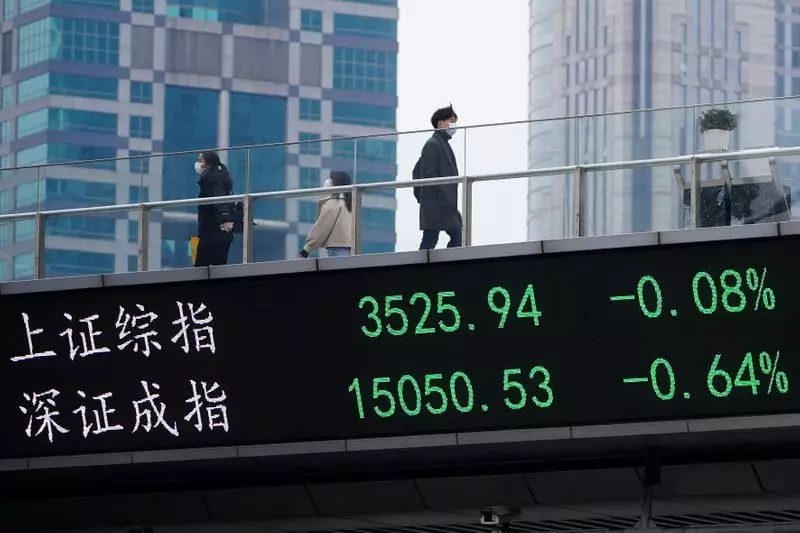Recent fluctuations in the Asian stock markets have captured the attention of investors and analysts alike. On a day when most Asian stocks showed an upward trend, the standout performers were undoubtedly the Chinese markets. This uptick came after the Chinese government revealed a robust package of stimulus measures aimed at revitalizing the economy. Such developments are not just local occurrences; they resonate across regional markets, with implications for global economic dynamics.
Wall Street’s Influence and Economic Context
The bullish momentum in Asian markets can be traced back to the successes on Wall Street, where strength in technology sectors propelled both the S&P 500 and the Dow Jones Industrial Average to unprecedented heights. The correlation between these markets is crucial; a rising tide in the U.S. often lifts other markets, especially in proximity to China, as investors seek to capitalize on potential gains.
In addition, the sentiment within Asian markets is buoyed by a recent, significant interest rate reduction by the Federal Reserve. This move not only aims to stimulate the U.S. economy, but also has a ripple effect on global markets, including those in Asia. Investors are keenly waiting for further indications from the Fed, hoping for continued support that can sustain this economic enthusiasm.
Notably, Chinese markets were the prime movers of the day. The Shanghai Shenzhen CSI 300 and the Shanghai Composite indexes both surged approximately 3%, while Hong Kong’s Hang Seng index followed with a 2.5% increase. The catalyst behind this notable performance was the announcement from the People’s Bank of China concerning a series of stimulus initiatives. These measures included lowering bank reserve requirements and offering reduced mortgage rates, aiming to stimulate consumer spending and improve business confidence.
In light of nearly three years marked by disinflation and lackluster business activity, these efforts were interpreted as steps toward rekindling economic growth. Furthermore, the anticipatory behavior of investors contributed to this rally, with many seizing the opportunity to purchase stocks that had recently undergone a price decline.
While the reactions to the new measures were overwhelmingly positive, analysts have voiced caution regarding their sufficiency. According to ANZ, more aggressive fiscal measures must be implemented for a meaningful turnaround in the Chinese economy. Such insights serve as critical reminders that while immediate boosts in markets are welcome, underlying economic challenges persist.
In parallel with developments in China, nearby markets showed varying degrees of response. South Korea’s KOSPI increased by 0.2%, Japan’s Nikkei 225 saw a modest gain of 0.5%, while the broader TOPIX index remained stable after a report indicated a slight escalation in producer inflation. These mixed signals underscore the complexities facing regional economies influenced by China’s market performance.
Turning to other major markets, India’s Nifty 50 index encountered hurdles in its aspirations to breach the 26,000 point threshold, leading to a muted opening. Meanwhile, the Australian ASX 200 index displayed sideways trading patterns, seemingly losing traction despite the positivity originating from China. This reluctance can be attributed to local economic pressures, particularly stemming from the Reserve Bank of Australia’s recent hawkish signals, which emphasized a commitment to maintaining high-interest rates longer-term to combat persistent inflation issues.
It’s worth noting that while Australian markets are intricately tied to Chinese commerce, local dynamics including inflation rates play a decisive role in the market’s overall health. Recent data revealing a substantial easing in consumer price index inflation provided a glimmer of hope, yet sentiment remained cautious.
While the immediate outlook appears buoyed by stimulus measures and a favorable lead from Wall Street, caution is warranted. Market gains driven by short-term responses to government policies must be tempered with an understanding of persistent economic challenges. Investors should remain vigilant, focusing on the broader economic conditions that influence market dynamics while navigating the intricate web of regional interdependencies. The coming days will reveal whether the current optimism can be sustained or if it will be tempered by deeper economic realities.

